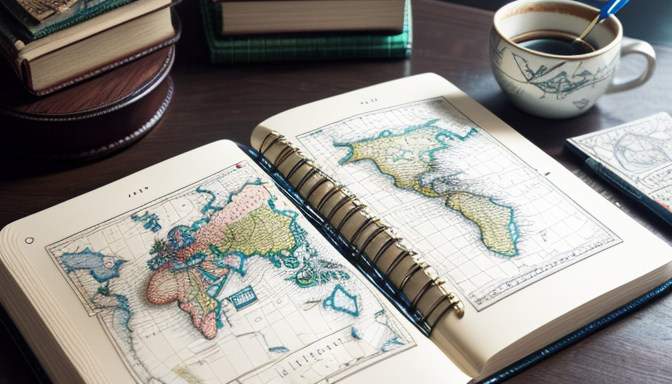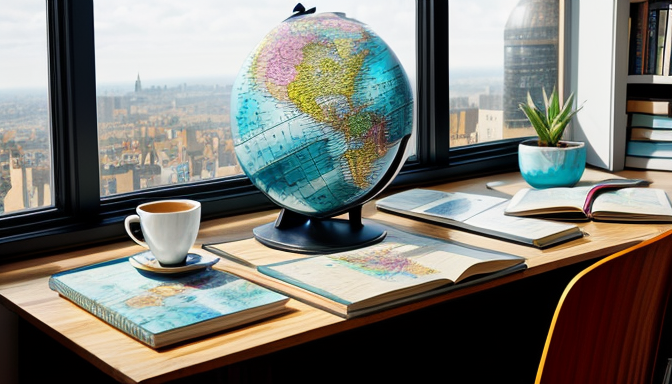Worldbuilding is like crafting a masterpiece; it requires both imagination and structure. If you’re diving into creating your own fictional universe, it’s vital to steer clear of common pitfalls that can lead to a tangled mess of ideas. Imagine trying to navigate a maze without a map—frustrating, right? By following a few essential strategies, you can create a world that feels alive, immersive, and coherent.
First, understand the basics of worldbuilding. This means not just jotting down random ideas, but building a foundation that includes geography, politics, mythology, and culture. Each element should interconnect seamlessly, like pieces of a jigsaw puzzle. For instance, how does the geography influence the culture? Does a harsh climate shape the political landscape? These questions can guide your world’s development.
Next, be aware of common mistakes that can derail your efforts. One frequent error is creating a world that is too vast and complex without any focus. Think of it like trying to watch five movies at once; you’ll miss the nuances of each story. Instead, start small and gradually expand. Focus on a particular region or aspect of your world, and flesh it out before moving on.
Finally, remember that worldbuilding is an ongoing process. Don’t hesitate to revise and refine your ideas as your story evolves. After all, even the best authors often find themselves reworking their worlds to enhance the narrative. With these strategies in mind, you’ll be well on your way to crafting a captivating universe that draws readers in and keeps them engaged.
Understanding the Basics of Worldbuilding
Worldbuilding is more than just crafting a backdrop for your story; it’s about creating a living, breathing universe that captivates readers. Think of your fictional world as a character in its own right, with its own quirks, history, and rules. To get started, you’ll want to pay attention to several key elements that form the backbone of any immersive setting.
First off, consider the geography of your world. Is it a sprawling desert, a dense forest, or a bustling city? Each landscape comes with its own set of challenges and opportunities. For example, a desert civilization might rely heavily on trade routes, while a forest-dwelling society could be rich in natural resources. This geographical choice will shape not only the culture but also the political dynamics of your world.
Next, dive into the politics and governance of your universe. Who holds power? Are there factions vying for control? Understanding the political landscape will add depth to your narrative. Similarly, explore the mythology and culture of your world. What stories do your characters tell? What traditions do they uphold? These elements will enrich your narrative and provide readers with a sense of authenticity.
In summary, worldbuilding is a multi-layered process that requires attention to detail. By focusing on geography, politics, mythology, and culture, you’ll create a robust framework that invites readers into your imaginative realm. So, what are you waiting for? Start sketching out the blueprint of your fantastical universe today!

Common Mistakes in Worldbuilding
When it comes to worldbuilding, even the most seasoned writers can trip over common pitfalls. One major mistake is neglecting the geographical layout of your universe. Imagine trying to navigate a city with no maps; it’s confusing and frustrating, right? Your readers deserve a world that feels as real as their own, with clear landscapes and logical layouts. Create a geography that enhances your story, whether it’s sprawling mountains or vast oceans.
Another frequent error is the lack of political structure. A world without politics is like a car without an engine—it just won’t go anywhere. Establishing a clear hierarchy, from rulers to common folk, adds depth. How do these political dynamics affect your characters? Do they live in a democracy or a dictatorship? This layer of complexity can enrich your narrative significantly.
Don’t forget about mythology and culture. Every world has its own stories, traditions, and beliefs that shape its inhabitants. Failing to develop these elements can lead to a flat, uninspired setting. Consider asking yourself: what myths do the people of your world tell? What festivals do they celebrate? These details breathe life into your universe and make it feel authentic.
Lastly, avoid overwhelming your readers with too much information at once. Just like a good meal, worldbuilding should be served in bite-sized pieces. Introduce your universe gradually, allowing readers to savor the details without feeling stuffed. Remember, it’s about creating a sense of wonder, not a laundry list of facts!
Frequently Asked Questions
- What is worldbuilding?
Worldbuilding is the art of creating an immersive and believable universe for your story. It’s like building a house; you need a solid foundation, walls, and a roof to make it livable. In writing, this means developing the setting, culture, history, and rules that govern your fictional world.
- Why is avoiding common pitfalls important?
Avoiding common worldbuilding pitfalls is crucial because these mistakes can lead to a confusing and unengaging experience for your readers. Think of it as navigating a maze; if the paths are unclear, you risk losing your audience. A well-constructed world keeps readers invested and eager to explore.
- How can I ensure my world feels unique?
To make your world feel unique, infuse it with personal experiences, cultural influences, and imaginative twists. Just like a chef adds their secret spice to a dish, your unique touch will set your world apart. Experiment with different elements and don’t be afraid to break the mold!

Recent Comments